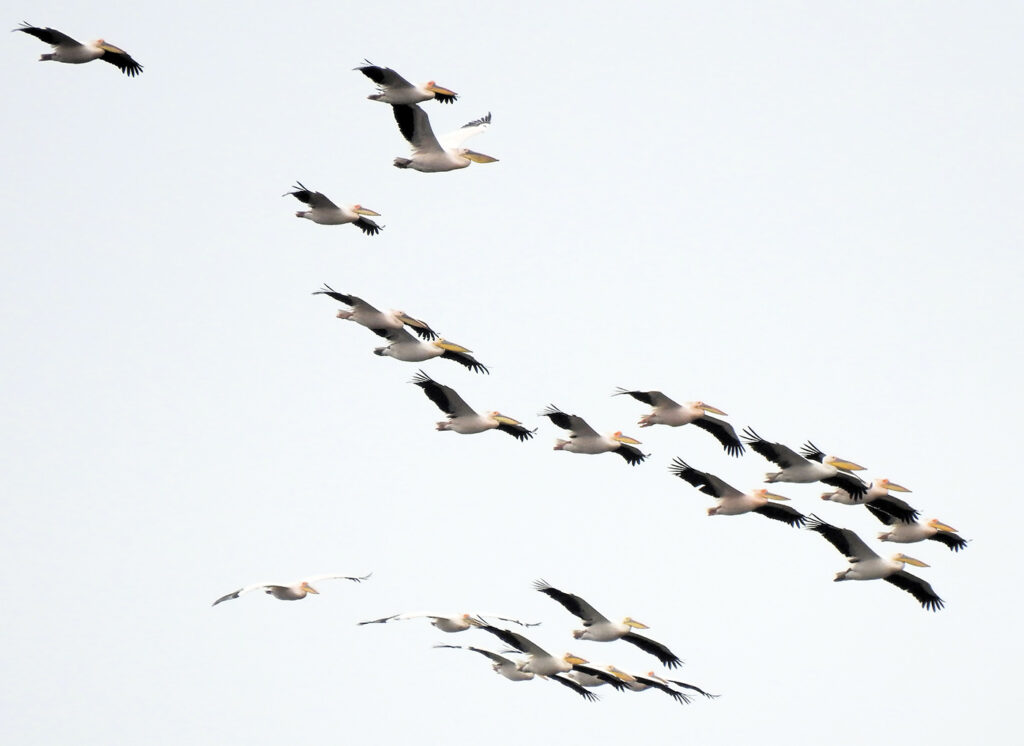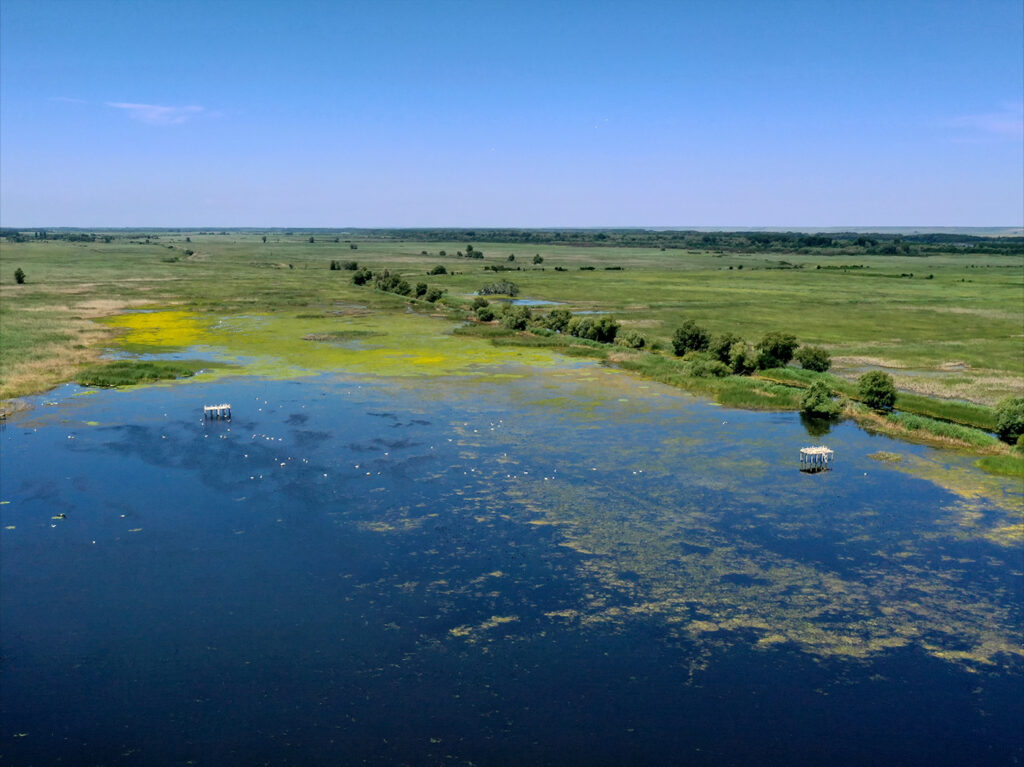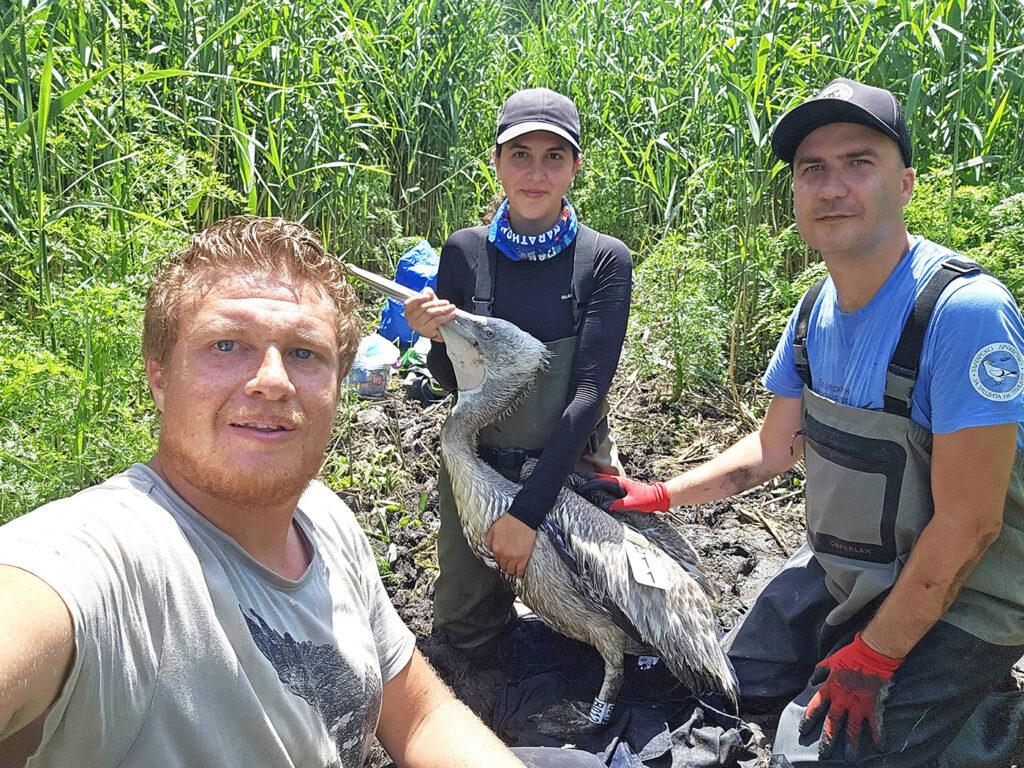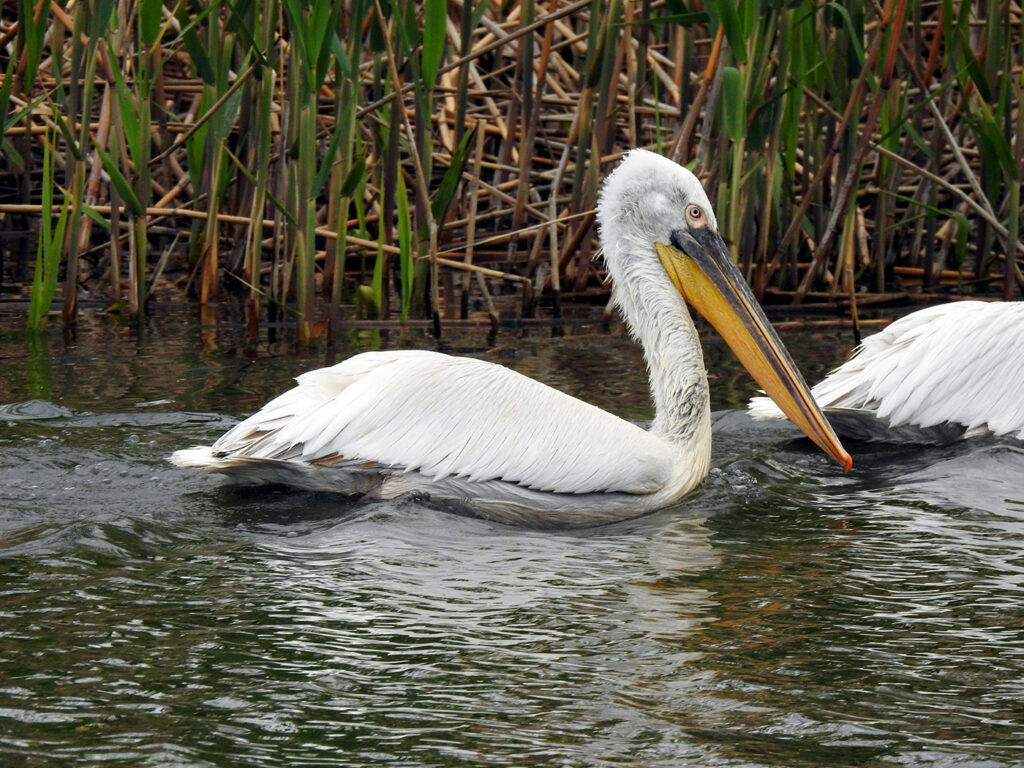The seventh international pelican census was conducted at the very beginning of June in the Balkan countries. The census aims to collect data on the population and distribution of Dalmatian and Great white pelicans in the study area. The event was organized within the initiative “Pelican Way of LIFE” and was coordinated by the Hellenic Ornithological Society (HOS).

Teams from the Bulgarian Society for the Protection of Birds (BSPB) also participated in the international initiative. They visited the wetlands of the greatest importance to the two pelican species in the country – Srebarna Lake, Persin Island, protected area “Kalimok-Brashlen”, Burgas Lakes, the dams Ovcharitsa and Rozov Kladenets, Studen Kladenets, Varna Lake, the islands and the sandy slopes along the Danube.
341 Dalmatian pelicans and 647 Great white pelicans in total were counted in Bulgaria. The highest number of Dalmatian pelicans was observed in the three nesting sites of the species in the country: “Kalimok – Brashlen” protected area near the town of Tutrakan – 118 individuals, in the marshes on Persin Island – 62 individuals, and in Srebarna Lake – 24 individuals. The highest number of Great white pelicans was recorded in the Burgas Lakes area – 408 individuals, the marshes on Persin Island – 63 individuals, and the Yatata protected area near Varna – 33 individuals.

During the Census special attention was paid to the three nesting sites of the Dalmatian pelican in Bulgaria – Srebarna Lake, Persin Island, and the “Kalimok-Brushlen” Protected Area. Currently, all colonies have young pelicans, many of which are already flying successfully. It is encouraging that the level of the Danube River remained relatively high and constant this season, which is crucial for the condition of the wetlands on Persin Island and in the “Kalimok-Brushlen” Protected Area.

The data collected during the international census will contribute to a better understanding and implementation of conservation activities for both species of pelicans in the Balkans. Cross-border cooperation is key to their protection.
It is important to note that immediately after the census, the BSPB team successfully tagged with transmitters two young Dalmatian pelicans hatched in the colony in the “Kalimok-Brushlen” Protected Area. This brings the total number of marked birds from Bulgarian colonies to three, which is a significant achievement and a step forward in the conservation of this majestic species.

The transmitters weigh only a few grams and are placed on a special part of the pelicans’ wing where they cause no discomfort. The marked birds quickly adapt to them and can carry out their daily activities without problems. Immediately after the procedures, the Dalmatian pelicans were released. Currently, data from the transmitters show that the tagged birds are still in the “Kalimok-Brushlen” Protected Area. Soon the data from the transmitter will be uploaded to our website and it will be possible to track the movements of the tagged pelican almost in real-time.

Additionally, this season the team successfully placed color rings on 27 young pelicans, again from the colony in the protected area near Tutrakan. The last time such ringing of Dalmatian pelicans was conducted was about 20 years ago at Srebarna Lake.
Placing transmitters on Dalmatian pelicans is a significant advancement in the study of this rare species. Through the data from the rings and satellite telemetry, scientists can track the movements of the birds and locate the places where pelicans feed, roost, rest, breed, and winter. Additionally, valuable data is obtained on the speed, altitude, and manner of flight in real-time. Thanks to the transmitters, scientists will learn more about the ecology, movements, and threats to the species, which will help them plan and undertake future conservation measures for its protection.

The study of the species is carried out within the framework of the “Pelican Way of LIFE“ initiative (LIFE18/NAT/NL/000716), coordinated by Rewilding Europe and funded by the LIFE Programme of the European Union and Arcadia Foundation, and with the assistance in Bulgaria of the Whitley Fund for Nature.